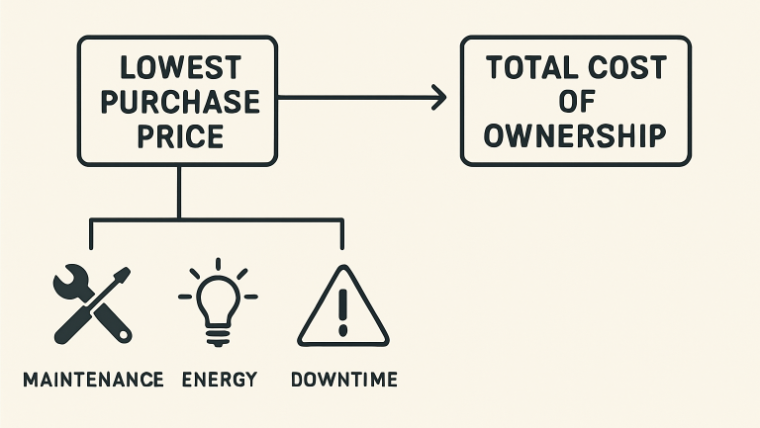
In the complex world of equity markets, two primary analysis frameworks dominate: technical analysis, which focuses on price action and market psychology, and fundamental analysis, which examines a company’s financial health and economic prospects. Savvy investors often blend both approaches to build a robust, data-driven investment process. This article breaks down each method, compares their strengths and weaknesses, and shows how you can apply both to make more informed trading decisions.
Table of Contents
What Is Technical Analysis?
Technical analysis (TA) studies historical price charts, volume patterns, and various indicators to forecast future price movements. Its core premise is that:
- Price Discounts Everything
All known information—company news, macro events, sentiment—is reflected in price and volume. - History Tends to Repeat
Market participants react similarly to certain setups, creating recurring patterns (e.g., head & shoulders, double tops). - Trend Is Your Friend
Identifying and trading in the direction of momentum often yields higher-probability setups.
Common tools and techniques include moving averages, Relative Strength Index (RSI), Bollinger Bands, candlestick patterns, and Fibonacci retracements.
For traders seeking a comprehensive platform that supports both analytical styles with transparent capital allocation, consider exploring Tradeify funded solutions.
What Is Fundamental Analysis?
Fundamental analysis (FA) evaluates a company’s intrinsic value by examining financial statements, industry position, and macroeconomic factors. Its core premises are:
- Intrinsic Value vs. Market Price
A stock’s fair value—based on earnings, cash flow, and growth potential—should guide buy/sell decisions. - Economic Moat
Sustainable competitive advantages (brand strength, patents, network effects) protect profit margins over time. - Macro and Micro Drivers
Interest rates, GDP growth, regulatory changes, and sector cycles all impact a company’s future earnings.
Key metrics include price-to-earnings (P/E) ratio, return on equity (ROE), debt-to-equity ratio, free cash flow, and revenue growth rates.
Side-by-Side Comparison: Technical Analysis vs. Fundamental Analysis
Primary Focus:
- Technical Analysis focuses on price movements, volume, and recognizable patterns within the market.
- Fundamental Analysis, on the other hand, examines the financial health of a company and the broader economic factors that influence its value.
Time Horizon:
- Technical Analysis typically operates on a short-term basis, ranging from minutes to a few weeks.
- Fundamental Analysis is used for medium- to long-term investing, usually from several months to years.
Decision Triggers:
- Technical traders make decisions based on chart breakouts and signals from technical indicators.
- Fundamental analysts look for valuation discrepancies, unexpected earnings reports, and future guidance from companies.
Data Sources:
- Technical Analysis relies heavily on real-time data such as price feeds and order flow.
- Fundamental Analysis pulls information from financial statements, company reports, and macroeconomic indicators.
Tools & Indicators:
- The technical approach employs tools like moving averages, oscillators, and trendlines.
- The fundamental approach uses financial ratios and valuation models like discounted cash flow (DCF).
Emotional Component:
- Technical Analysis often reflects and utilizes crowd psychology and market sentiment.
- Fundamental Analysis aims for objectivity, basing decisions on concrete financial metrics.
Flexibility:
- Technical methods are more agile, allowing quick reactions to market price changes.
- Fundamental methods adapt more slowly, requiring significant changes in underlying fundamentals to shift strategies.
Advantages & Drawbacks
Technical Analysis
- Advantages
- Rapid Decision-Making: Suited for active traders seeking quick entry and exit points.
- Clear Trade Rules: Defined pattern triggers and stop-loss levels.
- Adaptable to Any Market: Works in stocks, futures, forex, and crypto alike.
- Drawbacks
- False Signals: Market noise can generate misleading breakouts or reversals.
- Limited at Major Turning Points: Tech analysis may lag when fundamentals shift dramatically.
- Overfitting Risk: Excessive backtesting can tailor rules to past data that won’t repeat.
Fundamental Analysis
- Advantages
- Anchored in Real Value: Decisions are grounded in cash flow and earnings.
- Long-Term Perspective: Better suited for buy-and-hold investors and value plays.
- Macro Insight: Incorporates economic cycles, industry trends, and corporate strategy.
- Drawbacks
- Slower Reaction: By the time metrics are released, price may have already moved.
- Model Risk: Valuation assumptions can be wrong—small changes in growth rates or discount rates have big impacts.
- Requires Deep Research: Financial statement analysis and industry knowledge take time and expertise.
Integrating Technical and Fundamental Analysis
Rather than choosing one framework, many pro traders use a hybrid approach:
- Top-Down Screening
- Fundamental Filter: Identify undervalued sectors or stocks with strong earnings momentum.
- Technical Confirmation: Look for consolidation breakouts or trend continuation patterns before initiating a position.
- Event-Driven Entries
Use fundamental catalysts (earnings releases, analyst upgrades, macro data) as triggers, then time entries with technical setups (e.g., pullback to a key moving average). - Risk Management Alignment
Combine fundamental position sizing—allocating more to high-conviction names based on balance-sheet strength—with technical stop-loss placements just below chart support levels. - Multi-Timeframe Analysis
Apply TA on daily or intraday charts to fine-tune entry/exit, while using FA on quarterly or annual horizons to validate long-term conviction.
Practical Steps to Analyze Like a Pro
1. Build a Research Routine
- Morning: Scan financial news, earnings calendar, and macro updates.
- Mid-day: Review price action against opening bias, look for breakout or reversal signals.
- End-of-day: Log trades, note fundamental updates, and chart outcomes.
2. Develop a Watchlist
- Use fundamental screens (low P/E, high ROE) to narrow your universe.
- Overlay technical filters (above 50-day MA, bullish MACD crossover) to pick actionable candidates.
3. Maintain a Unified Journal
- Record both quantitative metrics (entry price, P/L, indicators) and qualitative notes (news catalysts, chart patterns, emotional state).
4. Regularly Backtest and Update
- Revisit your technical rules every quarter to weed out underperforming patterns.
- Update fundamental models with the latest quarterly reports and revised growth forecasts.
Conclusion
Navigating the stock market with confidence requires more than luck or gut feeling—it demands a structured approach that integrates both price behavior and business realities. Technical analysis empowers you with precision, helping you time entries and exits based on observable market behavior. Fundamental analysis, on the other hand, grounds your decisions in the real-world performance of companies, focusing on long-term value, competitive positioning, and macroeconomic forces.
Individually, each framework offers powerful insights. But in isolation, they can also leave gaps. A technically perfect chart setup may fail without solid fundamentals, while a fundamentally strong stock may underperform for extended periods if market sentiment turns sour. The true edge lies in combining both disciplines—using financial metrics to identify high-potential assets and timing your trades based on market sentiment and technical cues.


